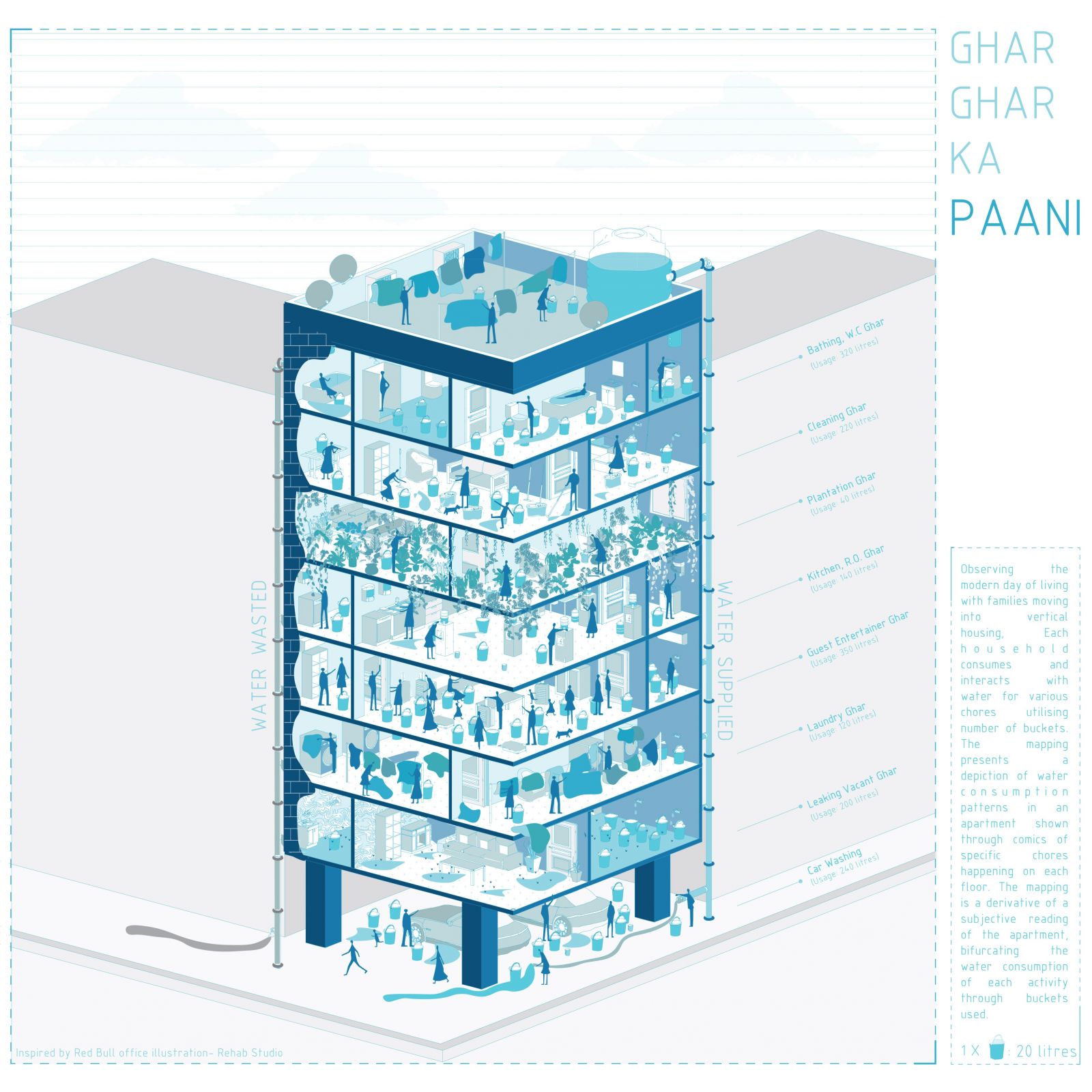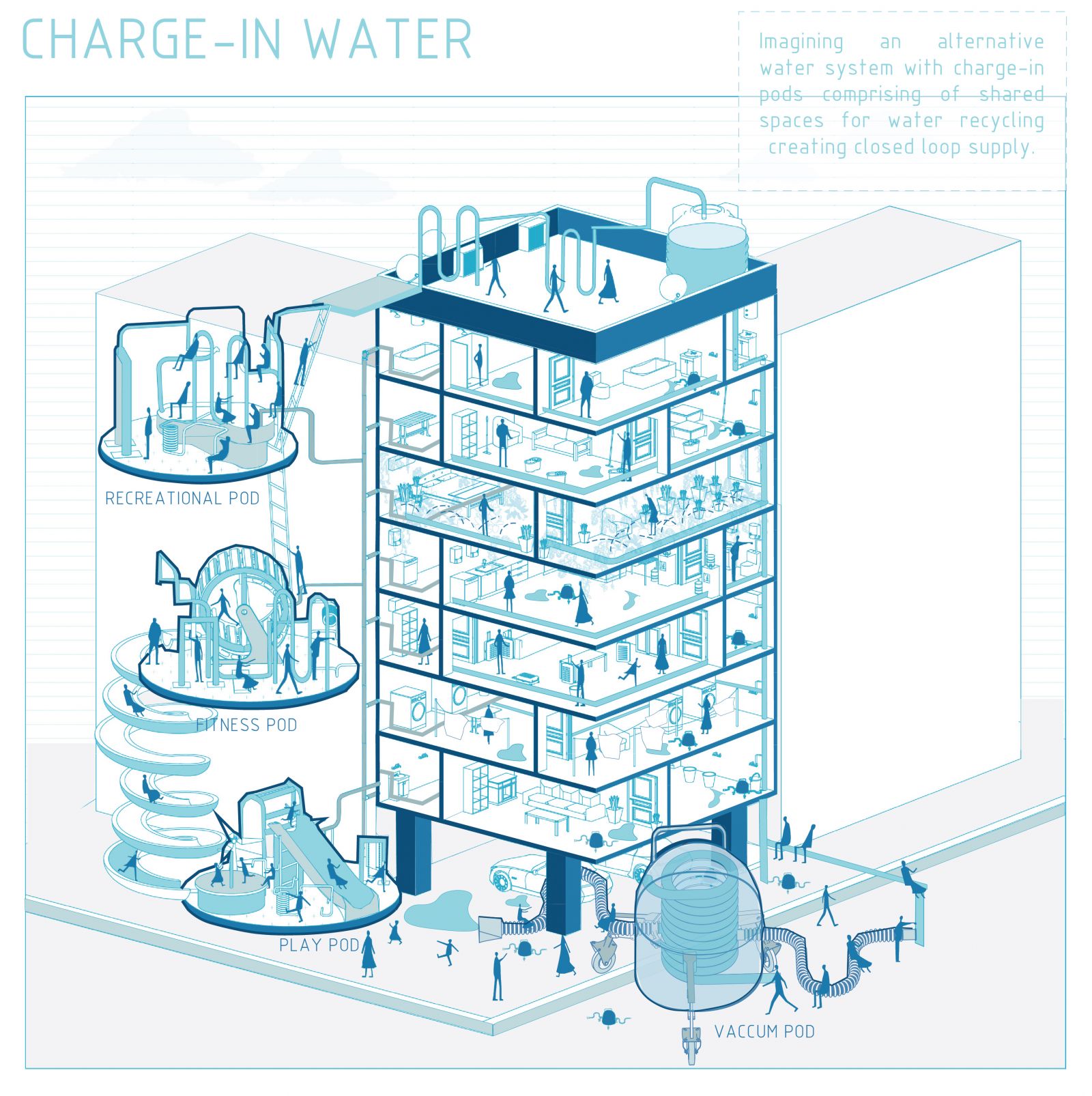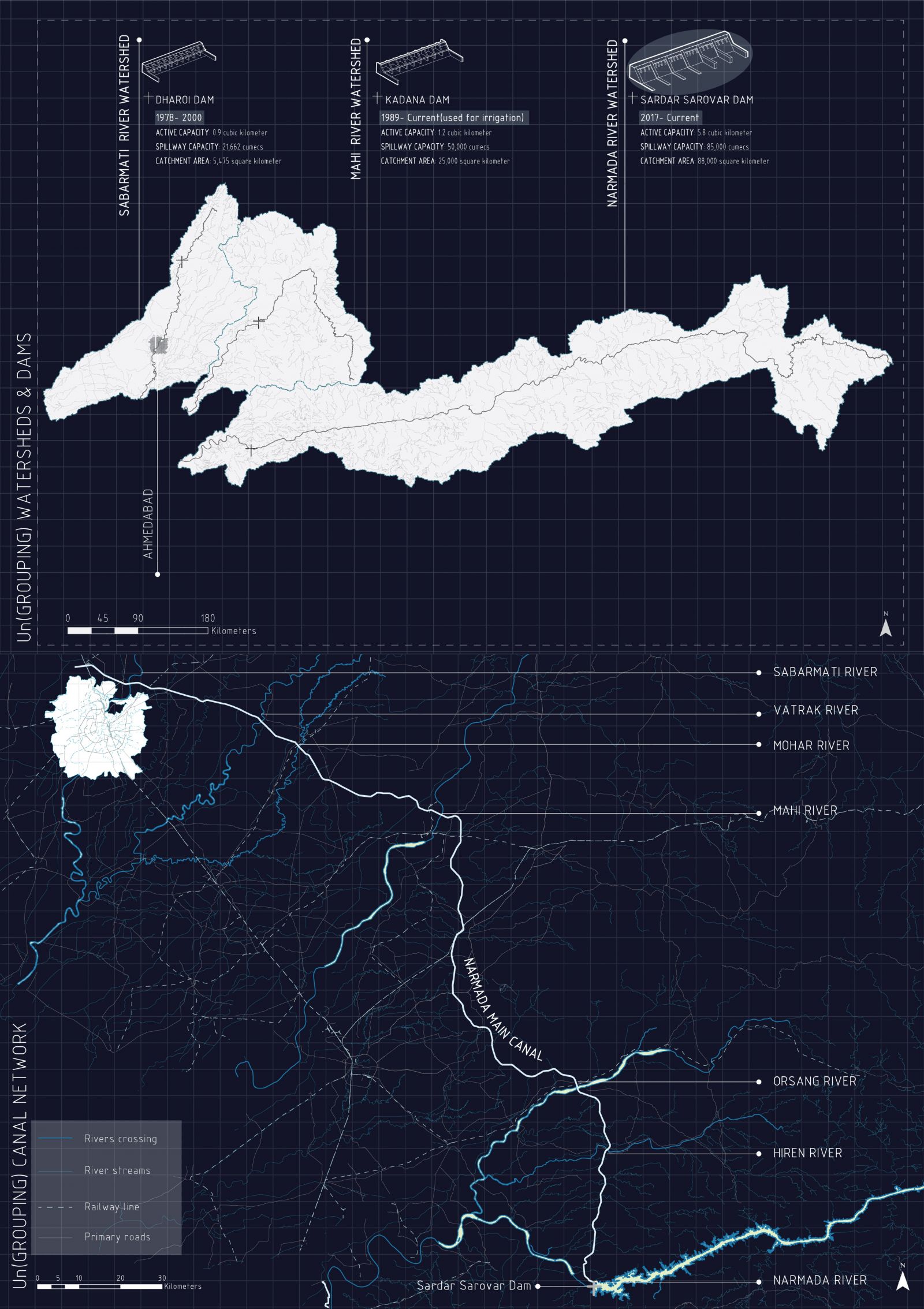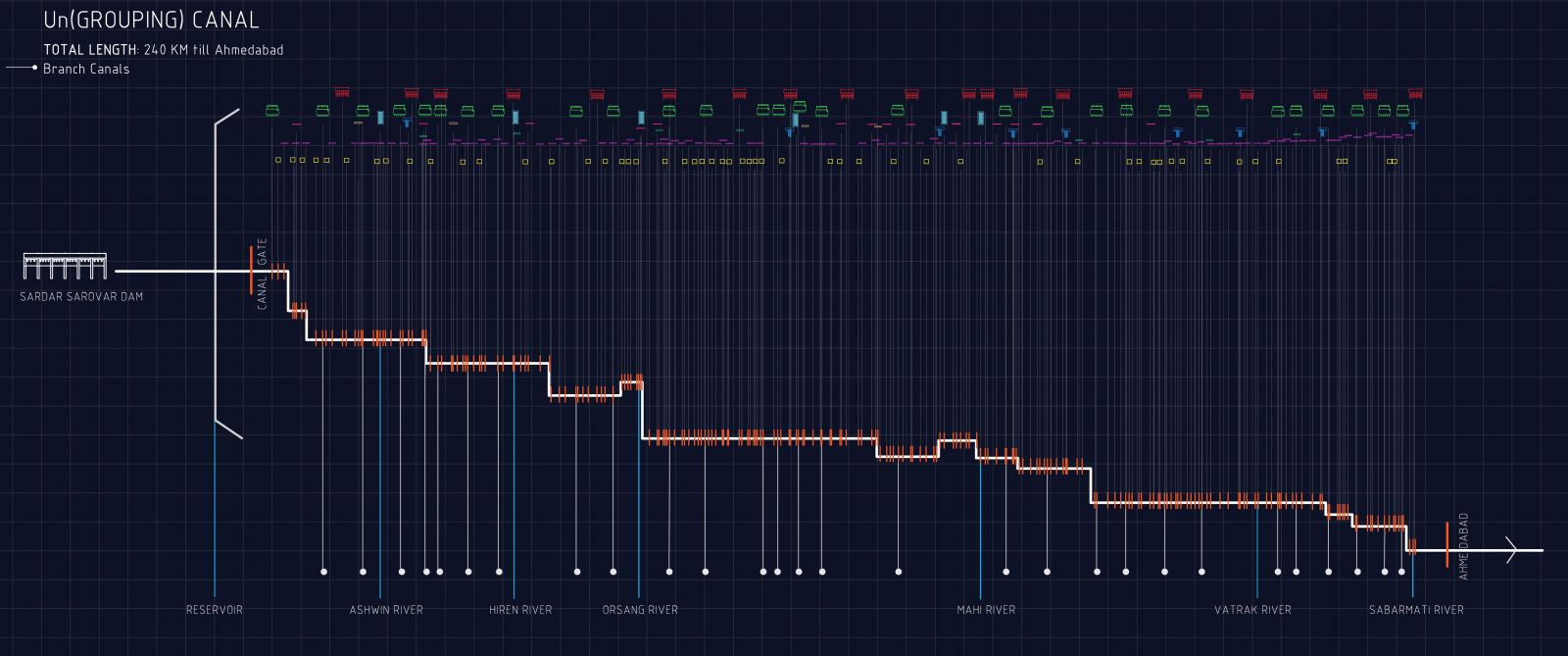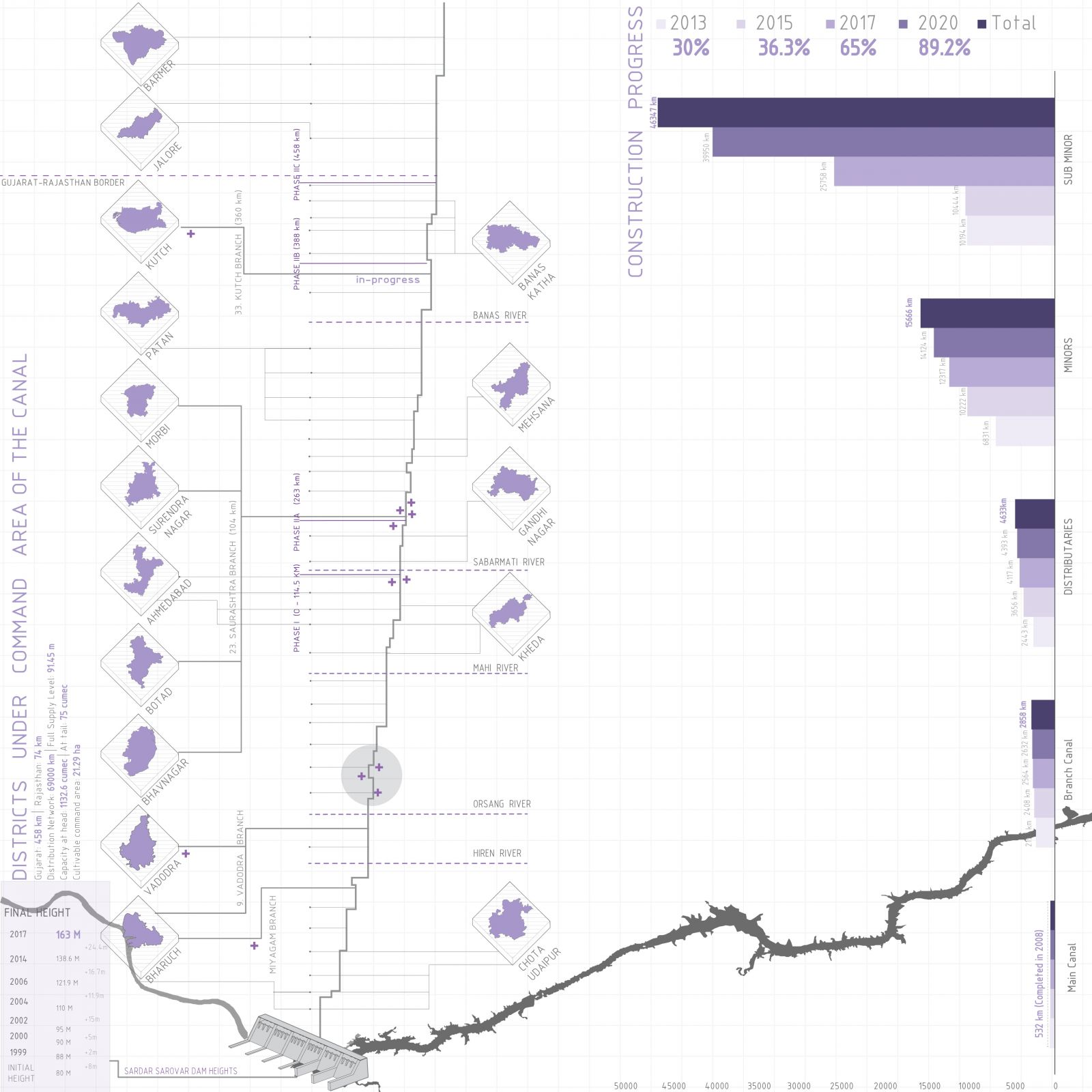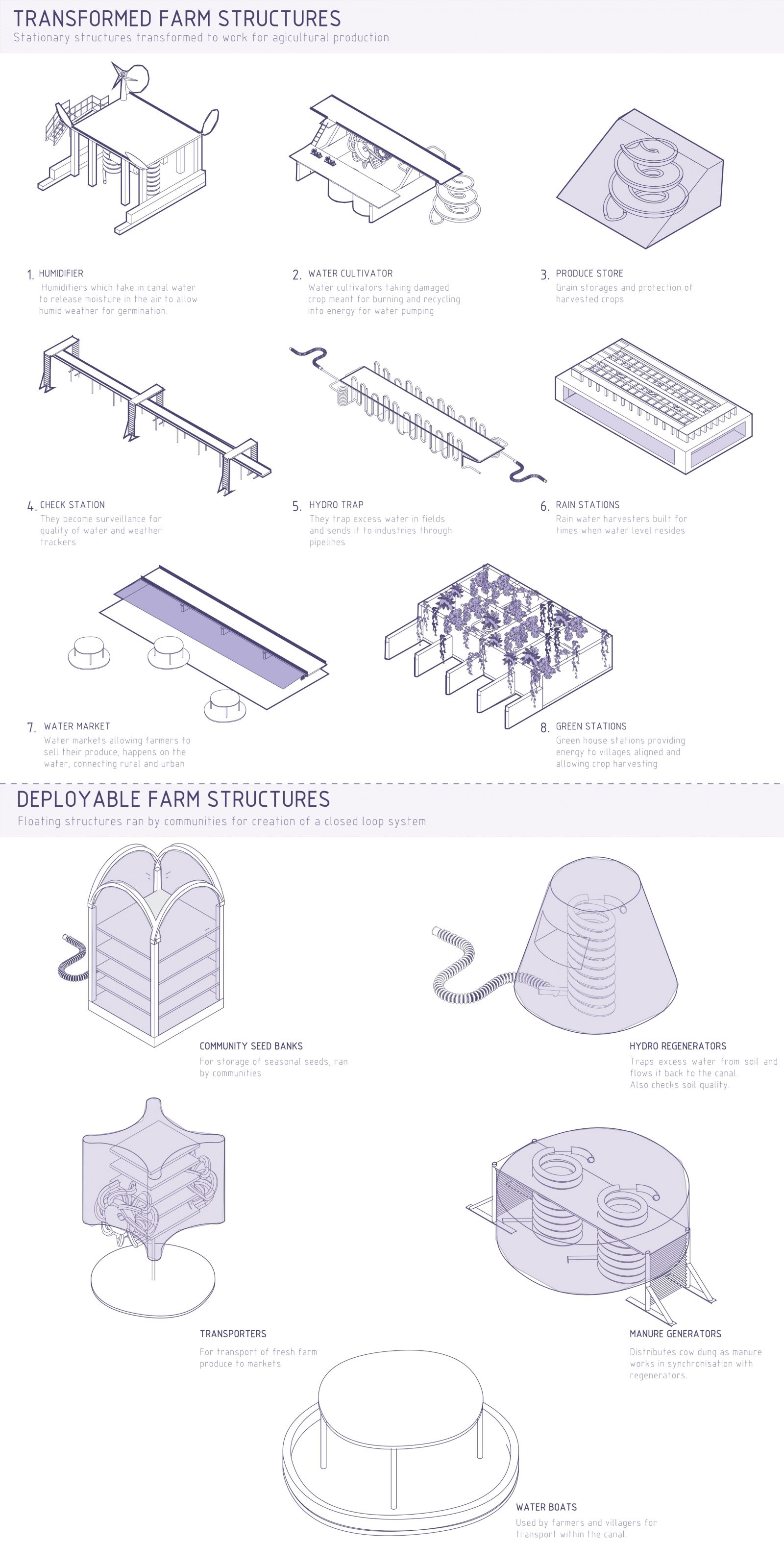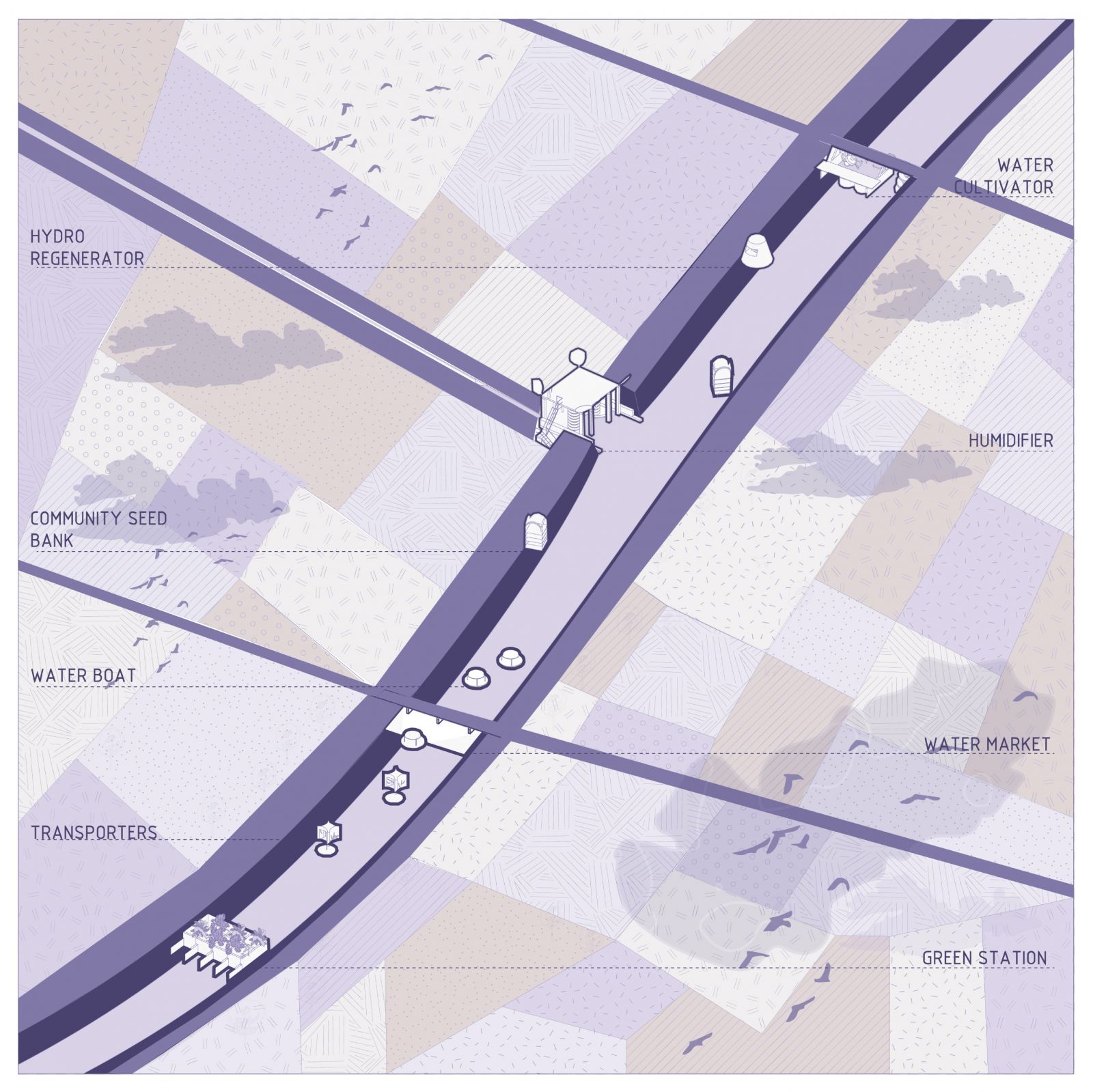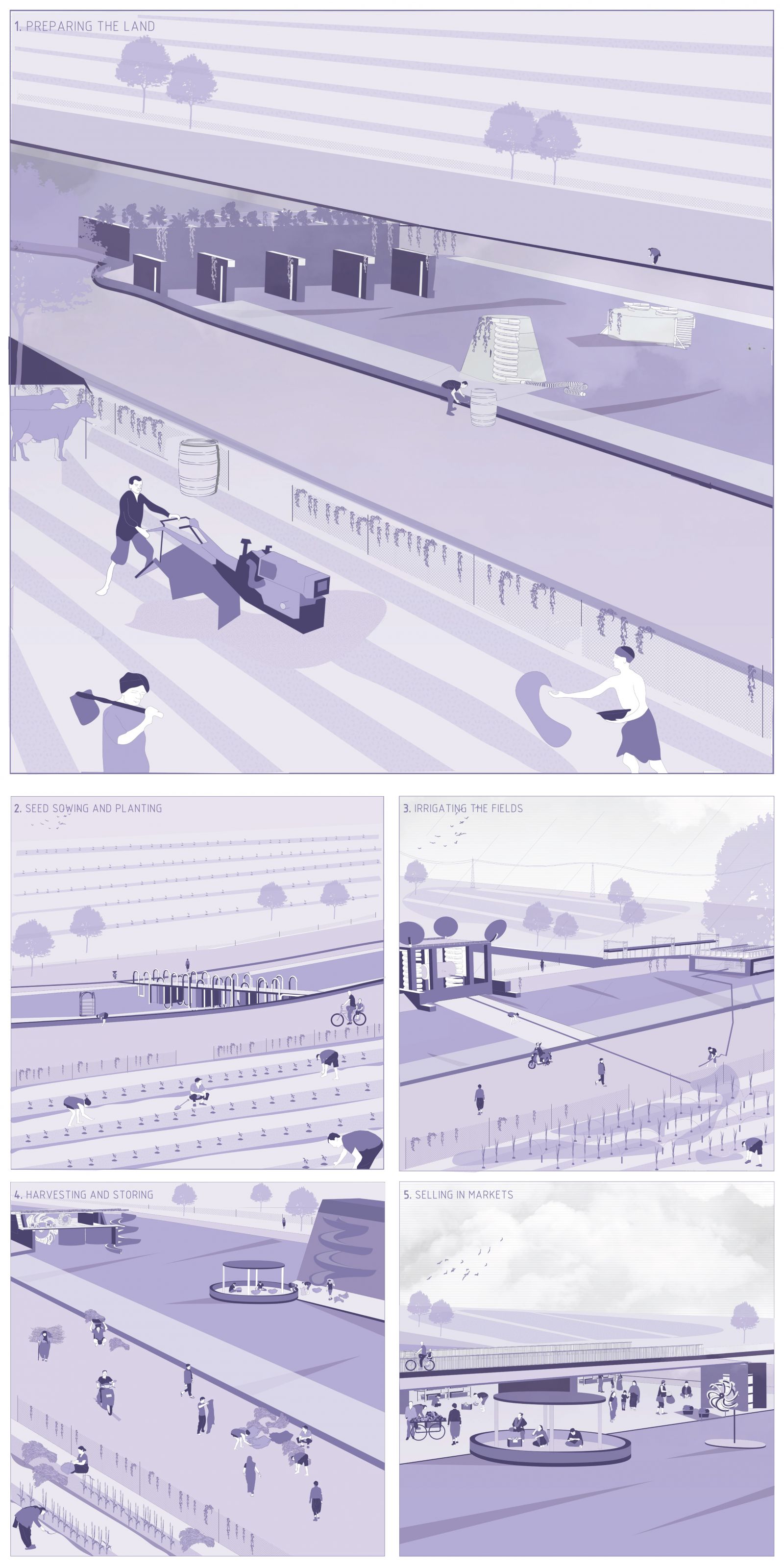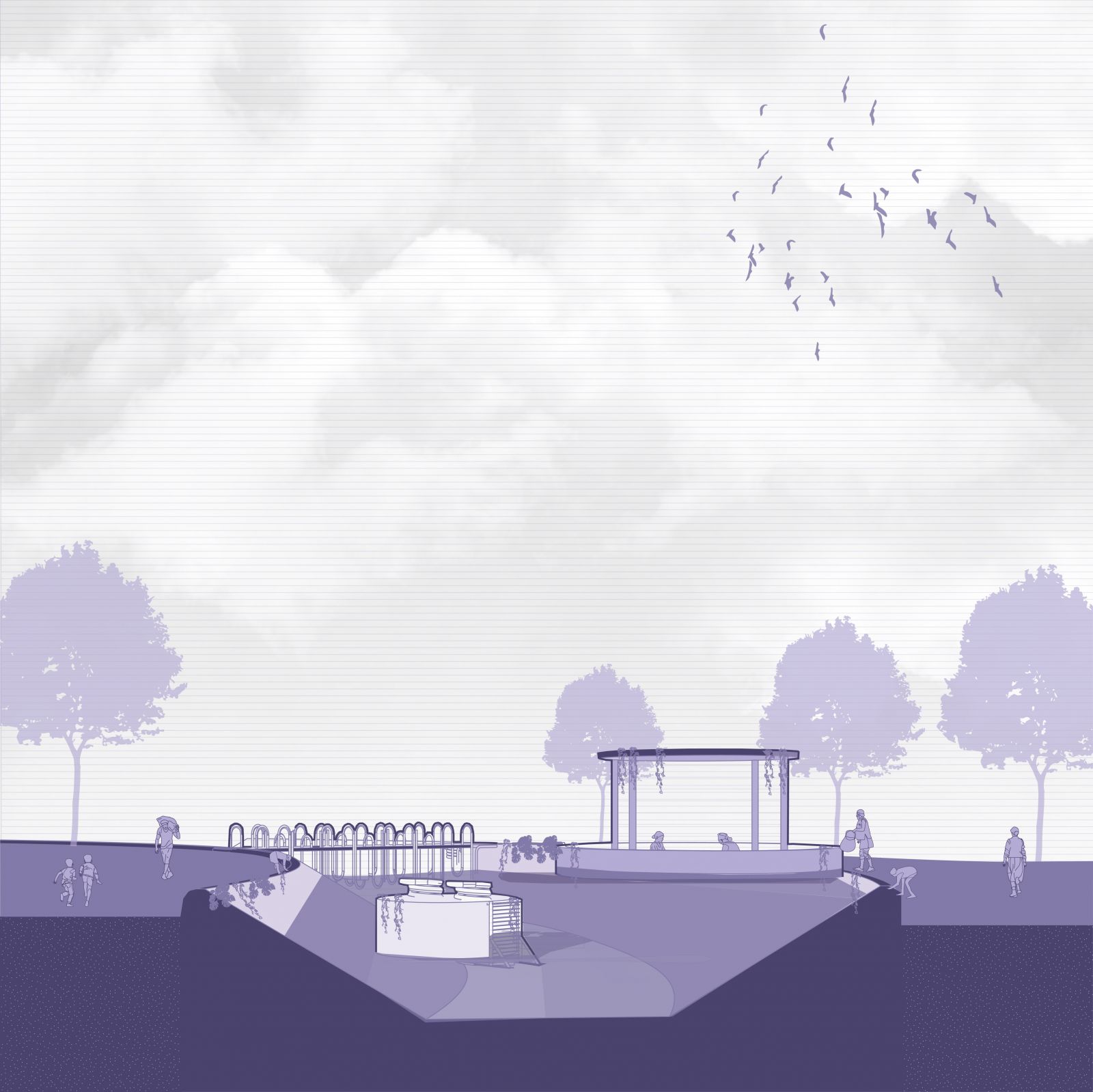Your browser is out-of-date!
For a richer surfing experience on our website, please update your browser. Update my browser now!
For a richer surfing experience on our website, please update your browser. Update my browser now!
The Synergetic Canal is a response to shifting narratives for water use, failure in infrastructure execution, and non-prevalent last mile connectivity of the Narmada Canal that has robbed thousands of farmers of the promise of water for irrigation. Situated in the Vadodara district, it re-imagines the canal network and its associated infrastructural systems as mechanisms that function to benefit the agrarian sector and farmers.
The speculation works with existing infrastructure systems and reimagines them as machines that contribute to the cycles of growing and harvesting that are not only productive but also regenerative. Added to the existing are community-developed mechanisms that are deployed to create decentralized and distributed agents of care and growth. The speculation is more a question ‘What if the canal system started working to create a sustainable holistic network for its initial purpose of agriculture?’
